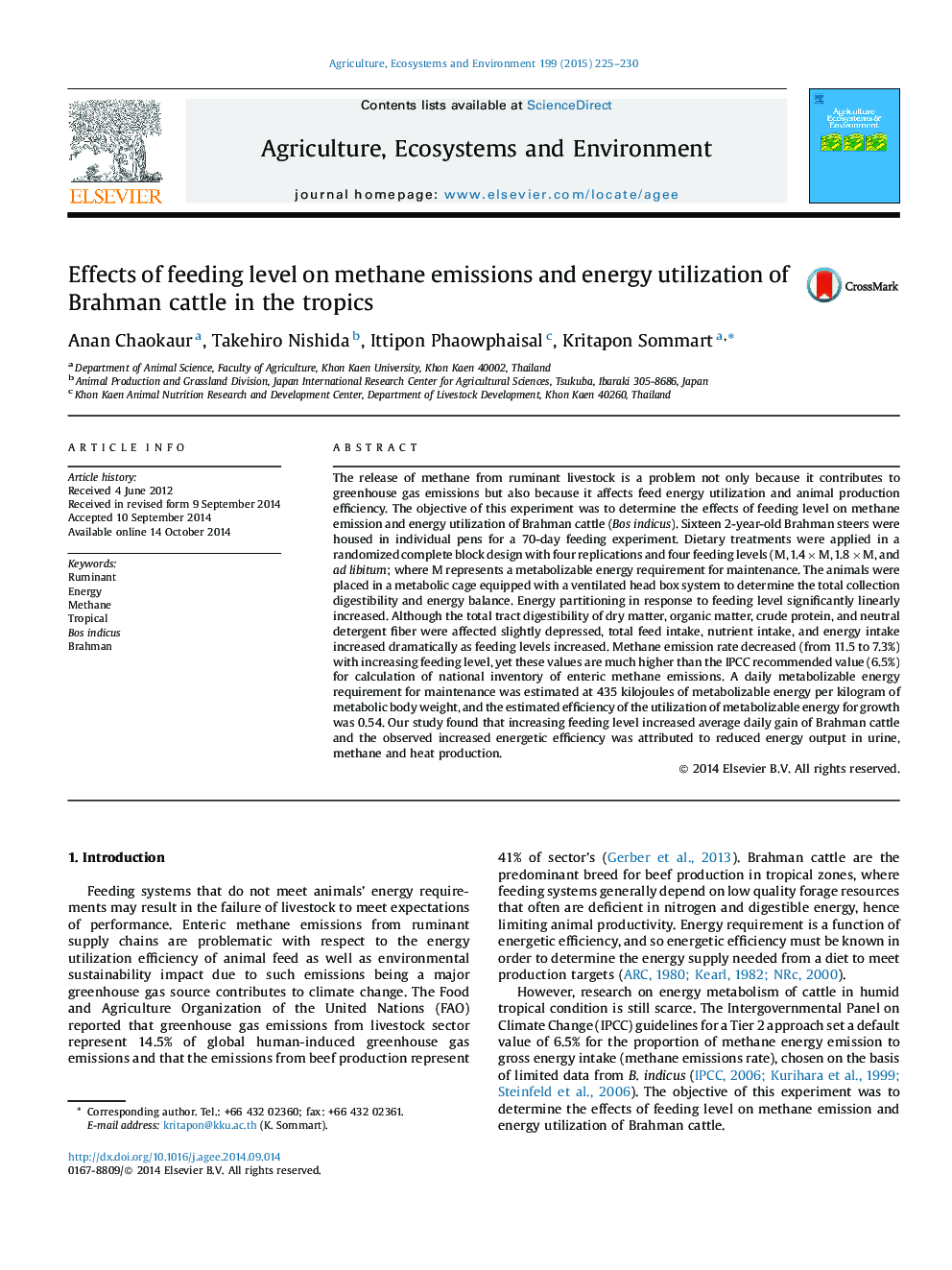| کد مقاله | کد نشریه | سال انتشار | مقاله انگلیسی | نسخه تمام متن |
|---|---|---|---|---|
| 2413861 | 1552053 | 2015 | 6 صفحه PDF | دانلود رایگان |
• Methane emissions of zebu cattle are higher than those recommended in the IPPC methodology.
• Increasing the cattle feed reduced enteric methane emissions.
• Feeding zebu cattle more improved their energetic efficiency and growth.
The release of methane from ruminant livestock is a problem not only because it contributes to greenhouse gas emissions but also because it affects feed energy utilization and animal production efficiency. The objective of this experiment was to determine the effects of feeding level on methane emission and energy utilization of Brahman cattle (Bos indicus). Sixteen 2-year-old Brahman steers were housed in individual pens for a 70-day feeding experiment. Dietary treatments were applied in a randomized complete block design with four replications and four feeding levels (M, 1.4 × M, 1.8 × M, and ad libitum; where M represents a metabolizable energy requirement for maintenance. The animals were placed in a metabolic cage equipped with a ventilated head box system to determine the total collection digestibility and energy balance. Energy partitioning in response to feeding level significantly linearly increased. Although the total tract digestibility of dry matter, organic matter, crude protein, and neutral detergent fiber were affected slightly depressed, total feed intake, nutrient intake, and energy intake increased dramatically as feeding levels increased. Methane emission rate decreased (from 11.5 to 7.3%) with increasing feeding level, yet these values are much higher than the IPCC recommended value (6.5%) for calculation of national inventory of enteric methane emissions. A daily metabolizable energy requirement for maintenance was estimated at 435 kilojoules of metabolizable energy per kilogram of metabolic body weight, and the estimated efficiency of the utilization of metabolizable energy for growth was 0.54. Our study found that increasing feeding level increased average daily gain of Brahman cattle and the observed increased energetic efficiency was attributed to reduced energy output in urine, methane and heat production.
Journal: Agriculture, Ecosystems & Environment - Volume 199, 1 January 2015, Pages 225–230
